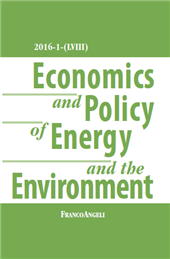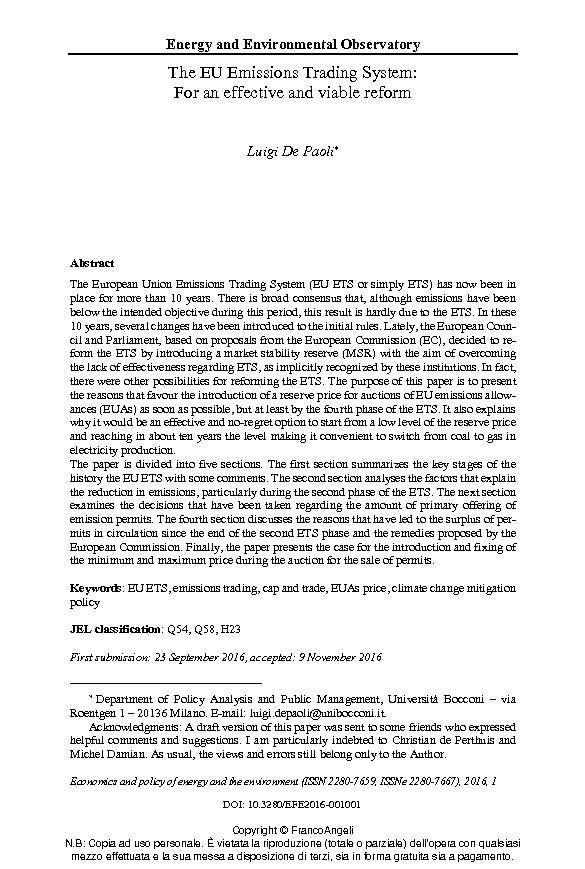2016 - Franco Angeli
Artículo
Digital Version
Download | Copia/pega | Impresión
The EU emissions trading system : for an effective and viable reform
5-40 p.
- The European Union Emissions Trading System (EU ETS or simply ETS) has now been in place for more than 10 years. There is broad consensus that, although emissions have been below the intended objective during this period, this result is hardly due to the ETS. In these 10 years, several changes have been introduced to the initial rules. Lately, the European Council and Parliament, based on proposals from the European Commission (EC), decided to reform the ETS by introducing a market stability reserve (MSR) with the aim of overcoming the lack of effectiveness regarding ETS, as implicitly recognized by these institutions. In fact, there were other possibilities for reforming the ETS. The purpose of this paper is to present the reasons that favour the introduction of a reserve price for auctions of EU emissions allowances (EUAs) as soon as possible, but at least by the fourth phase of the ETS.
- It also explains why it would be an effective and no-regret option to start from a low level of the reserve price and reaching in about ten years the level making it convenient to switch from coal to gas in electricity production. The paper is divided into five sections. The first section summarizes the key stages of the history the EU ETS with some comments. The second section analyses the factors that explain the reduction in emissions, particularly during the second phase of the ETS. The next section examines the decisions that have been taken regarding the amount of primary offering of emission permits. The fourth section discusses the reasons that have led to the surplus of permits in circulation since the end of the second ETS phase and the remedies proposed by the European Commission. Finally, the paper presents the case for the introduction and fixing of the minimum and maximum price during the auction for the sale of permits. [Publisher's text].
Forma parte de
Economics and Policy of Energy and Environment : 1, 2016-
Información
Código DOI: 10.3280/EFE2016-001001
ISSN: 2280-7667
KEYWORDS
- EU ETS, emissions trading, cap and trade, EUAs price, climate change mitigation policy
-
En el mismo archivo
- The EU emissions trading system : for an effective and viable reform
- Non Paper : a soft price collar for the European carbon market
- Repeating discrete choice experiments to estimate public preferences in a case of costal land use policy
- An analysis of the relationship between energy consumption and economic growth : evidence from the BRICS
- The relevance of Life Cycle Costing in Green Public Procurement
- Energy, transport, pollution and natural resources : Key elements in ecological taxation



